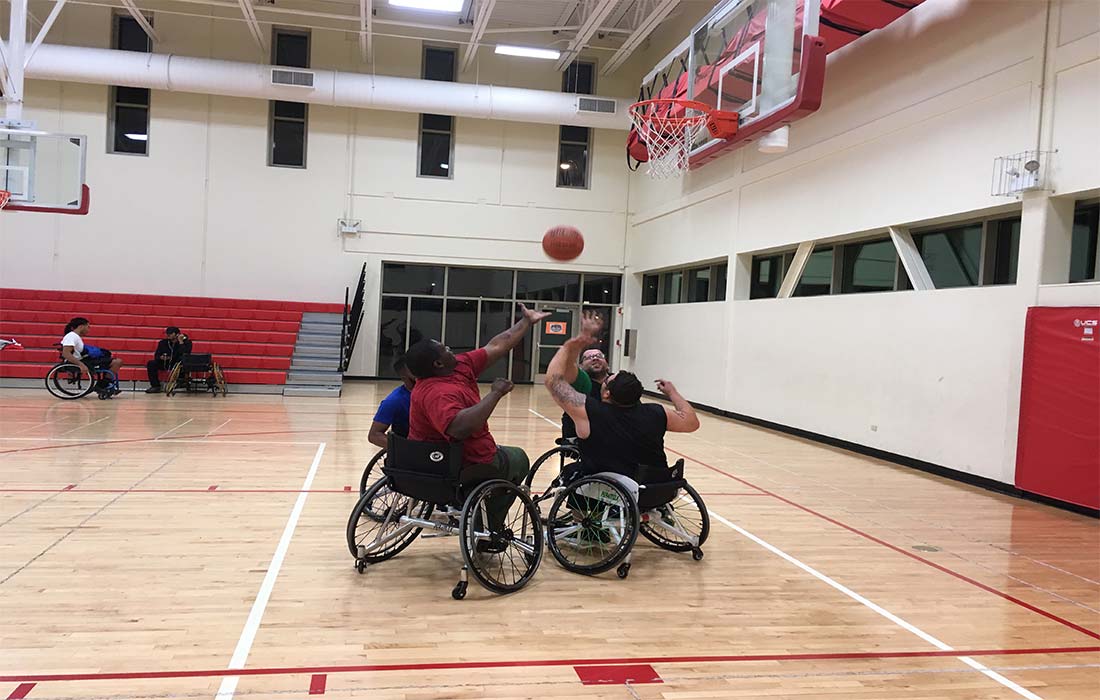By Jenna West
They gather each Wednesday and Friday night at the Jesse White Community Center, sounds of basketballs dribbling across the court, laughter and coaches calling plays filling the gymnasium. And in the background, the ever-present hum of wheels turning.
In their third year in existence, the Chicago Skyhawks dream of one day making it to the National Wheelchair Basketball Association Tournament. To do so, they must be ranked in the top 48 of the NWBA, but first they have to hope they can fund the trip if the day ever comes.
The NWBA has three divisions of play and ranks in the top 20 in each. The Skyhawks are No. 20 in Division III.
“Cost, even minimal, is a barrier to participation,” said Daniel Ferreira, adaptive sports facilitator.
The Chicago Park District has five adaptive sports programs and hopes to continue adding to that for those who are physically disabled or deaf and hard of hearing, according to Ferreira. But without increased financial backing, it becomes that much more difficult.
“You are the victim of your own success, basically,” Ferreira said.
Funding for adaptive programs throughout Illinois comes from Fund 13, a special recreation tax levy that collects .04 percent of the state’s property taxes. Illinois is the only state in the country with Fund 13.
Most state adaptive programs are designed for two or more cities or park districts to share resources. Chicago’s size allows it to operate without joining forces with a nearby community, but it also means more residents and programs for the budget to cover.
Ferreira said the Park District spends close to $30,000 on youth and adult wheelchair basketball alone. Parents of participating children pay no expenses. For adult participants, the Rehabilitation Institute of Chicago, a Skyhawks sponsor, covers the cost of meals and transportation to and from games. The Park District also provides court space and pays for registration fees and hotel accommodations.
Players can apply for grants from the Challenged Athletes Foundation to buy them basic wheelchairs for playing basketball, which typically cost $3,000.
Skyhawks players come from all areas of the city and have vastly different backgrounds. Some are permanently wheelchair-bound after injuries, while others were born with physical disabilities, such as Ivory Harris.
As a lifetime basketball fan introduced to organized wheelchair basketball in high school, Harris, 33, who has cerebral palsy, said he considers this sport to be the only area of his life he in which he is competitive.
“If we can’t go to games, then we can’t go to nationals,” Harris said. “That’s why we’re here, other than love of the game, is to [compete].”
On the North Side, the Division I Hornets, who are currently ranked 10th in the NWBA, face similar challenges. They seek to play ranked teams that compete at their level, sometimes travelling longer distances than the Skyhawks, who typically play only across the Midwest.
Over the weekend, the Hornets travelled to Phoenix, Arizona, but in order to keep within their budget they have not played since November, when they last faced other ranked teams.
“Money is always an issue,” said Dave Radbel, 37, a Hornets player. “These trips are expensive.”
The Park District is currently applying for grants to ensure funding keeps coming in, hoping to receive, among others, a $25,000 grant from the Christopher and Dana Reeve Foundation. A grant that large would guarantee another year of adequate resources to run current programs and add more.

